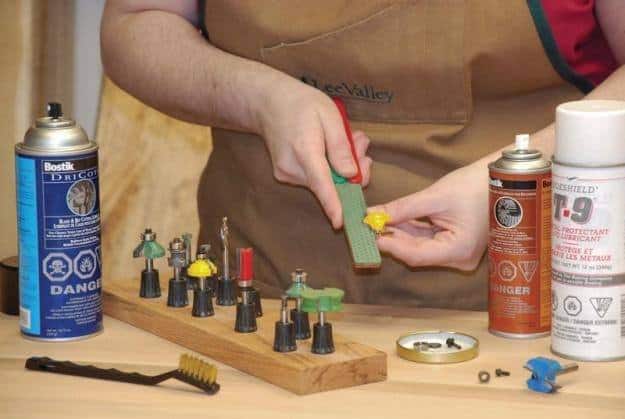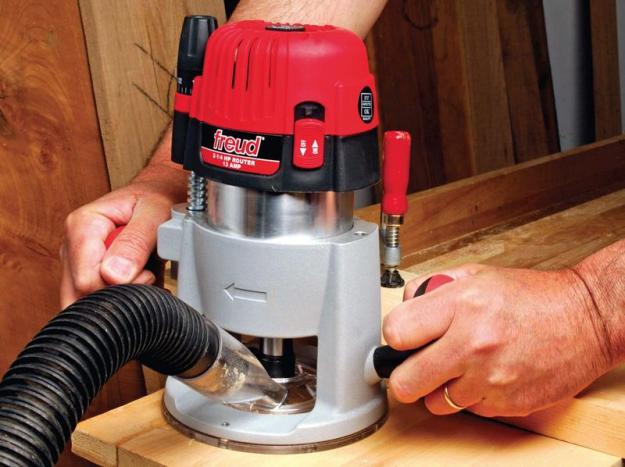How to Maintain a Wood Router for Extended Durability?
A wood router, just like any other power tool, requires some good maintenance practices for it to serve the wood worker for an extended period of time. Wood workers who are reckless in the way they handle their wood router not only shorten the “routing” life of the tool but they also pose a great risk to themselves and other users. In order to maintain a wood router and ensure it serves you for a long time, follow the following maintenance practices.
General Practices
These are regular checks on your router. They include:
- Regular Routine Checking: The wood worker should conduct regular checks on the router so as to find out any damages. These power tools handles heavy duty tasks and therefore they are prone to damages. By regularly checking the tool for damages, the craftsman will be able to identify any damages early enough and repair them. This will help avoid improper cuts and any unexpected accidents.
- Any enclosed routers should be connected to a dust collector so as to extend its operating life. They should always be clean and spotless from dust.
- Keep the router clean: You should keep the router clean at all times. Keep the router free from any dust or dirt. Removing any dirt and dust from the machine will help avoid overheating of the tool. Debris normally accumulates below and on top of the router. In order to eliminate this material, you can use a blow gun to remove the accumulated debris from the motor, collet, or the plunge.
- Also ensure that the inner parts of your router are kept free from dust at all times. This will help avoid overheating and will keep the machine cool.
- Router Brushes: The brushes of your router should be checked from time to time. These are situated on the sides of your machine and can be replaced easily. The user should simply open the cover and check whether the brushes are in proper working condition or not. Brushes that are in improper condition should be replaced immediately. The main advantage associated with the brushes is that they are available in various shapes and designs and thus all you have to do is to choose the one that will suit your tool.
Maintenance Procedure
- Always unplug the router: This is a precautionary measure that most craftsmen overlook. It is important to always to switch off and unplug the machine before the user conducts any routine maintenance practices. This will help avoid accidents and should be done irrespective of whether your machine is used free hand or mounted on a table.
- Inspect the power code so as to find out whether it is damaged or not.
Router Blades and Bits
- Conduct regular checks on the blades: The woodworker should check on a regular basis the blades put on the router. While doing this the user should be extremely cautious so as to avoid any damages to the hands. In case you get any damaged blades, replace them immediately. The loose ones should be tightened as well.
- Sharpen the blades: The blades are a key part of a woodworking router. Without sharp blades the woodworker cannot get fine and smooth cuts. It is only with sharp blades that the wood worker can attain high-quality cuts and designs. The blades should therefore be sharpened regularly so as to achieve the best cuts and designs. Furthermore, blunt blades pose a great risk of harm to the user.
- Cleaning of the collet: The collet holds the router bit and therefore it is an important part of your router. For the router to function properly the collet should hold the bit tightly. Therefore, proper maintenance of this part is important for the router to work properly. You should ensure the collet is clean by using a small brass or nylon brush to clean its interior and outer parts. Consider also dumping it into a solvent solution that will soften the dirt that has built up on the collet. The dust accumulated in the collet makes it hard to remove the collet and the bit.
Router Base and Moving Parts
- Waxing the base of the router: A router requires a smooth base for it to function and move smoothly. Therefore ensure that the router base is properly waxed so as to ensure a smooth operation.
- Lubrication of moving parts: For the router to function properly, it is mandatory that all its moving parts are lubricated. Avoid using inappropriate lubricants on the machine since it will damage the tool. Always use the ideal lubricant on the moving parts and the bearings.
- Clean the bearings: You should always keep the spinning bearings of the router free from dust. Allowing dust to accumulate on them will result in overheating and therefore for your machine to work properly clean the bearing regularly.
Safety Measures
To ensure the safety of the wood worker, follow the following measures;
- Always wear ear defenders, eye and dust protection. Routers are extremely noisy and they produce a lot of dust and dirt when routing.
- Every time you want to operate on your router, make sure you turn it off at the mains just to be sure it is off.
- Ensure the router and the wood or work piece are held securely. This will enable you to “rout out” in either direction.
- Work slowly: Since the router always rotates clockwise, it is advisable that the user routers the work piece from left to right while ensuring they hold the router firmly. Try as much as possible to avoid working routing from right to left. If you do so, the router is forced to run along the wood and thus it becomes easier to lose control of the tool.
- Shallow cutting: Make shallow cuts at all times when you begin the routing process. By doing so, you will be able to prevent the wood from splintering and be in better control of the wood working router.
- Be in full control of the router: For safe and successful routing, the woodworker should have full control of their power tool. In order to achieve this, the woodworker may have to use a work bench or a router table. Alternatively, you can use a portable router fence. You can also make use of router bits that come with attached ball bearing tips that normally guide the routing path.
Conclusion
By following the right maintenance and safety practices you will be able to maintain a wood router for extended durability. Follow these guidelines and your tool will serve you for a long period.



